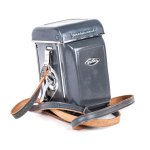Most of the polarizers (if not all of them) do slightly reduce the incoming amount of light, so if you're shooting "old school all-manual mode", WITHOUT the flash, consulting your external lightmeter, you got to compensate for it. With the old flashes, manual or auto mode (where you manually choose ISO/ASA, F stop and the sinc speed), you've got to compensate. Now, with the flash being set to TTL mode, the exposure system should do it for you (and the built in flash is TTL compliant, the lens has to be compliant too, of course). As for the "fill mode", you should compensate too, I believe.

